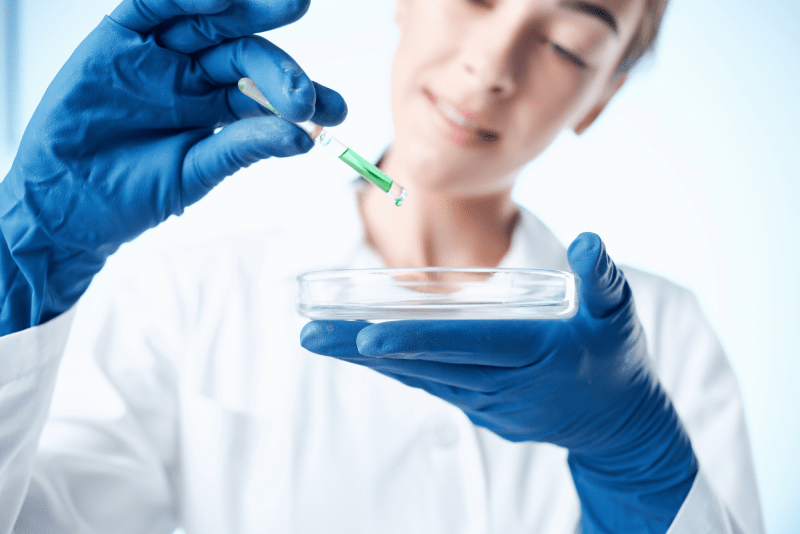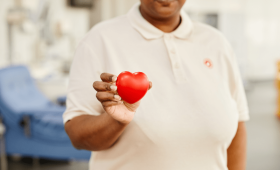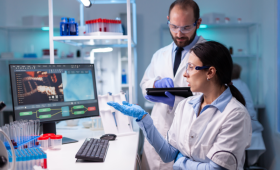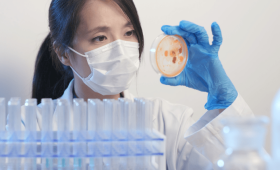Lymphoma is a type of cancer that originates in the lymphatic system, and in addition to chemotherapy and radiation therapy, stem cell transplantation plays a critical role in its treatment, especially in recurrent (relapsed) or high-risk cases. Stem cell transplantation (commonly known as bone marrow transplantation) is a vital treatment aimed at rebuilding the blood-forming system damaged after the patient undergoes high-dose chemotherapy.
Turkey has become one of the leading healthcare centers, offering international standard lymphoma treatment with its high-technology centers and specialized teams in this field. This guide details the most frequently asked aspects of stem cell transplantation in lymphoma treatment.
How Is Stem Cell Transplantation Used In Lymphoma Treatment?
Stem cell transplantation is typically used in lymphoma treatment for patients who do not respond to standard treatments (chemotherapy/radiotherapy) or those with a high risk of disease recurrence. The treatment’s goal is to kill all cancer cells in the body with high-dose chemotherapy, followed by transplanting the patient’s own healthy stem cells (autologous) or stem cells taken from a suitable donor (allogeneic) to fully regenerate the patient’s completely reset immune and blood system. This intensive treatment significantly increases the patient’s chances of recovery.
Which Types Of Stem Cell Transplantation Are Applied For Lymphoma?
Two main types of stem cell transplantation are applied in lymphoma treatment: Autologous (patient’s own cells) and Allogeneic (donor cells) transplantation. Autologous transplantation is often preferred as the first option in Hodgkin lymphoma and certain non-Hodgkin lymphoma types; the greatest risk with this method is the inability to completely clear the patient’s own cells before freezing. Allogeneic transplantation, on the other hand, is used in high-risk patients or those who relapse after autologous transplantation, due to the donor cells’ ability to destroy cancer cells (Graft-versus-Lymphoma effect).
What Is Autologous Stem Cell Transplantation And When Is It Preferred?
Autologous stem cell transplantation is the most commonly used method in lymphoma treatment, involving the collection and storage of the patient’s own healthy stem cells and their reintroduction after high-dose chemotherapy. This method aims to rapidly rebuild the body’s immune system and allow for the administration of high-dose chemotherapy. Autologous transplantation is preferred to increase the treatment success rate and induce long-term remission, especially when Hodgkin lymphoma relapses and in some aggressive non-Hodgkin lymphoma types.
When Is Allogeneic Stem Cell Transplantation Necessary In Lymphoma?
Allogeneic stem cell transplantation is usually necessary in lymphoma treatment for patients with very high-risk disease, those who relapse despite autologous transplantation, or those with certain types of stubborn lymphomas (e.g., some T-cell lymphomas). This type of transplantation offers the advantage of the donor’s immune system recognizing and attacking lymphoma cells as foreign (Graft-versus-Lymphoma effect). However, because this transplant carries the risk of Graft-versus-Host Disease (GVHD), it is a more complex and riskier procedure, applied only when deemed necessary.
What Are The Eligibility Criteria For Stem Cell Transplantation?
Eligibility criteria for stem cell transplantation in lymphoma treatment depend on the patient’s overall health status, age, and adequacy of organ functions. It is essential to have sufficient heart, lung, and kidney functions to withstand the intense chemotherapy and its side effects. Patients generally under 65-70 years old are considered more suitable, but the decision is made after detailed tests by a multidisciplinary team, considering the patient’s biological age and comorbidities (additional illnesses).
How Does High-Dose Chemotherapy Affect The Transplant Process?
High-dose chemotherapy constitutes the most critical and challenging stage of the stem cell transplantation process. This chemotherapy aims to completely destroy all lymphoma cells and, unfortunately, the patient’s own bone marrow. Since the patient’s immune system is completely reset after chemotherapy, the risk of infection reaches its peak, and the patient is kept in a specialized isolation room. The period until the transplanted stem cells rebuild this destroyed system is the most sensitive phase of the recovery process.
What Evaluation Tests Are Performed Before Transplantation?
Pre-transplant evaluation tests are vital for the patient to safely navigate the transplantation process. These tests include cardiac functions (ECG, ECHO), pulmonary function tests, infection screenings (hepatitis, HIV), dental checks, and detailed blood analyses. Furthermore, a psychiatry/psychology evaluation is mandatory to determine whether the patient is emotionally and mentally prepared for the process and to provide necessary long-term support.
What Are The Success Rates Of Stem Cell Transplantation In Turkey?
The success rates for stem cell transplantation for lymphoma in Turkey are parallel to international standards in internationally accredited centers. Success varies depending on the lymphoma subtype, the stage of the disease at the time of transplantation, and the donor type. Success in autologous transplantation depends on the patient’s remission status, while in allogeneic transplantation, it can be higher due to the Graft-versus-Lymphoma effect. Turkey is a reliable option for patients, particularly with high non-relapse rates in autologous transplantation.
Is Stem Cell Therapy Applied To All Lymphoma Types?
Stem cell therapy is not routinely applied to all lymphoma types. It is mostly reserved for high-risk situations like aggressive Non-Hodgkin lymphoma types and Hodgkin lymphoma relapses. In low-grade (indolent) lymphomas, the first-line treatment is usually chemotherapy or targeted therapies, not transplantation. The decision for transplantation is personalized based on the biological behavior of the lymphoma subtype, the patient’s response to previous treatments, and the extent of the disease spread.
What Are The Factors Determining The Cost Of Lymphoma Stem Cell Treatment?
The cost of lymphoma stem cell treatment depends on the type of treatment (autologous or allogeneic), donor availability, the patient’s age, and the presence of comorbidities. Allogeneic transplantation is more expensive than autologous transplantation due to donor screening, compatibility tests, and potential GVHD management. While these treatments are offered at more competitive prices in Turkey compared to Western countries, prices also vary based on the intensity of the drugs used, the length of the hospital stay, and the scope of the health tourism package offered.
How Are Stem Cells Collected From The Body In Autologous Transplantation?
In autologous transplantation, stem cells are typically collected from the patient’s body, usually from the peripheral blood. This process begins with the patient being given special medications (growth factors) for several days that mobilize the stem cells from the bone marrow into the blood. Then, the blood is filtered using an apheresis machine to separate the cells, and stem cells are collected. This painless procedure is similar to a blood donation, and the collected cells are stored by freezing for use after high-dose chemotherapy.
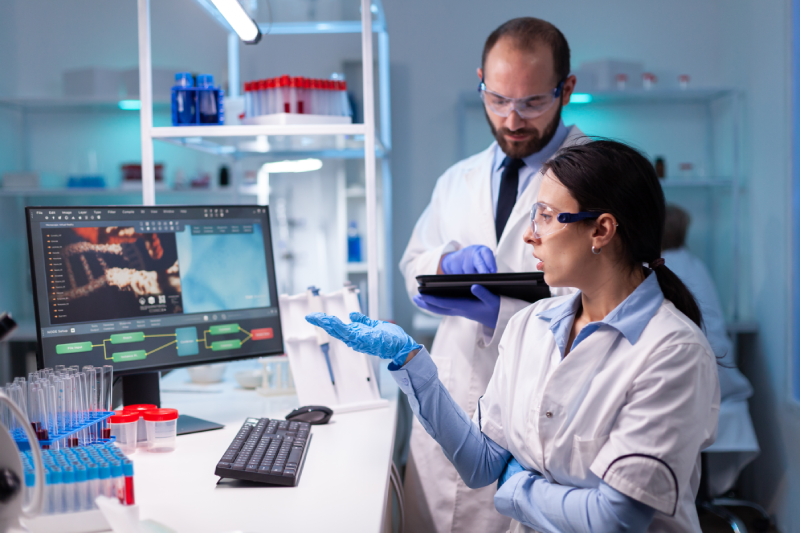
Why Is Tissue Compatibility (HLA Matching) So Important In Allogeneic Transplantation?
Tissue compatibility (HLA matching) in allogeneic transplantation is vital for survival success. HLAs (Human Leukocyte Antigens) are proteins that allow the immune system to distinguish its own cells from foreign cells. The higher the compatibility between the donor and the recipient, the lower the risk of the transplanted cells attacking the patient’s tissues (GVHD) and the risk of the body rejecting the transplant. The most ideal match is usually found in a fully matched sibling.
How Long Does The Isolation Period Last After Transplantation?
The isolation period after transplantation lasts an average of 2 to 4 weeks, depending on how quickly the patient’s immune system recovers. Because high-dose chemotherapy resets the bone marrow, the patient’s white blood cells (infection-fighting) are very low. During this critical period, the patient stays in specialized isolation rooms in a sterile environment, minimizing the risk of infection. Reaching a safe level of blood counts (engraftment) and controlling fever are the necessary conditions for the isolation period to end.
What Is The Most Serious Complication Seen After Transplantation?
The most serious complication seen after allogeneic transplantation is Graft-versus-Host Disease (GVHD), where the transplanted donor cells attack the patient’s healthy tissues. GVHD can affect organs like the skin, liver, and digestive system and can range from mild to life-threatening. The most serious risk in autologous transplantation is the transplant not being successful enough (engraftment failure) after high-dose chemotherapy or disease relapse. Managing these risks requires long-term follow-up.
What Are The Long-Term Side Effects Of Transplant Treatment?
The long-term side effects of lymphoma stem cell transplantation depend on the intensity of the chemotherapy used and the presence of GVHD. Long-term effects may include infertility, risk of secondary cancers, thyroid or other hormonal disorders, and reduced lung function. Chronic GVHD, in particular, can lead to severe damage to the skin, eyes, and lungs, seriously impacting the quality of life. Patients must be included in lifelong follow-up programs to manage these effects.
How Should The Lifestyle Change After Stem Cell Transplantation?
The post-transplant lifestyle requires permanent discipline and hygiene. Patients must avoid crowds, high-risk infection environments, and pets until their immune systems fully recover (usually 6-12 months). Nutrition must adhere to very strict neutropenic diet rules to reduce infection risk. Furthermore, physical activity should be slowly increased, and smoking and alcohol consumption must be completely avoided. These fundamental lifestyle changes support the success of the treatment.
Is There A Risk Of Relapse After Treatment?
Unfortunately, the risk of lymphoma relapsing (returning) exists even after stem cell transplantation. The risk of relapse depends on the lymphoma subtype, the stage of the disease before transplantation, and the type of transplant (the risk is generally lower in allogeneic transplantation due to the GvL effect). Early detection of the disease and achieving complete remission with stem cell transplantation minimizes the likelihood of relapse. Due to this risk, patients must be kept under strict follow-up with regular imaging and blood tests after transplantation.
How Long Should Immunosuppressive Drugs Be Used After Transplantation?
The use of immunosuppressive drugs after transplantation applies only to allogeneic (donor) transplant patients. These medications are used to prevent the transplanted donor cells from attacking the patient’s body (GVHD). The duration of use can last for months, sometimes years, depending on whether the patient develops GVHD. Drug doses are gradually reduced under doctor’s supervision as the risk of GVHD decreases. These types of drugs are not used in autologous transplantation.
Why Is Psychological Support Important Before Stem Cell Transplantation?
Psychological support before stem cell transplantation is critical for preparing for the long and exhausting treatment process. The intense stress experienced since diagnosis, the expectation of long isolation, and uncertainty can cause patients to experience anxiety and depression. Psychological support helps patients to set realistic expectations, improve treatment compliance, manage emotional eating or coping issues, and indirectly contributes to the success of the treatment.
Why Should Transplant Centers In Turkey Be Preferred?
Transplant centers in Turkey should be preferred due to their advanced technological infrastructure, hematology and oncology teams with international experience, and especially their competitive price advantages. Many Turkish centers are accredited by international organizations and offer high-quality service, including complex allogeneic transplants. The geographical location, ease of access, and comprehensive health tourism packages offered make the treatment process more accessible and comfortable for international patients.
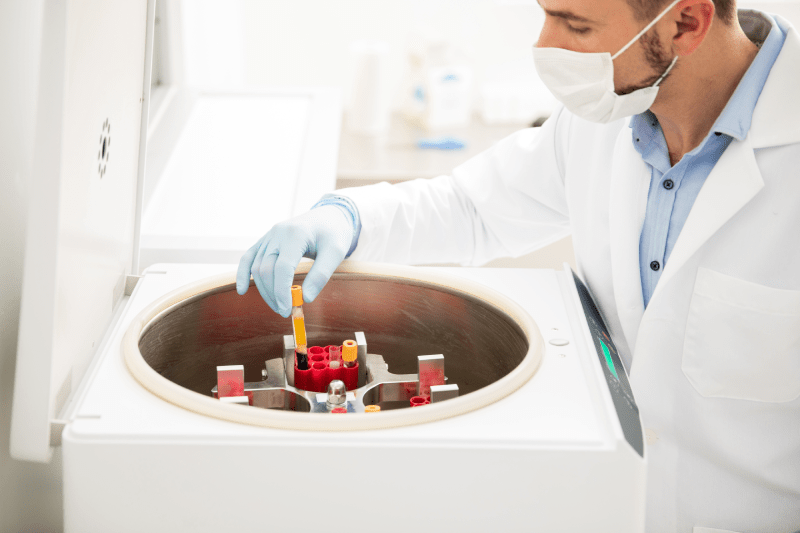
What Is The Most Suitable Age Range For Lymphoma Stem Cell Transplantation?
The most suitable age range for lymphoma stem cell transplantation is generally considered to be 18 to 65 years. However, today’s medicine focuses on the biological age, which considers the patient’s overall health status, organ reserves, and comorbidities rather than chronological age. While autologous transplantation can be applied to patients up to 70 years old, the risks for allogeneic transplantation increase with age, requiring a more rigorous assessment for the decision.
How Does Medication Use Change And What Should Be Considered After Transplantation?
Medication use after transplantation revolves around anti-infective drugs, GVHD medications (for allogeneic transplant), and vitamin supplements. Patients must use high-dose antibiotics, antivirals, and antifungals for a period. Most importantly, dosage adjustments must be made under doctor supervision due to potential changes affecting the absorption of all used medications. Medications that can irritate the stomach (NSAIDs) should be strictly avoided.
Why Does The Cost Of Stem Cell Transplantation Vary From Country To Country?
The cost of stem cell transplantation varies greatly from country to country because prices depend on the healthcare system structure, laboratory operational costs, personnel fees, and the cost of specific medications used. Turkey, by combining advanced medical technology and expert personnel with lower operating costs compared to Western countries, offers transplantation and related medical services at significantly more affordable prices, creating a major advantage in health tourism.
Where Are Stem Cells Collected From And Is The Procedure Painful?
Stem cells are usually collected from the donor’s or patient’s peripheral blood, and the procedure is generally painless. The growth factors given before the collection process may cause bone pain or flu-like symptoms, but there is no pain during the actual apheresis procedure. Alternatively, in some cases, stem cells may be collected from the bone marrow under general anesthesia; in this situation, temporary mild pain may be felt at the collection site after the procedure.
What Is The Importance Of Pre-Transplant Infection Screenings?
Pre-transplant infection screenings are vital due to the high-dose chemotherapy and suppression of the immune system. Viruses that are latent (dormant) in the patient’s body (e.g., hepatitis B, CMV, EBV) can become active when the immune system is reset after transplantation, leading to fatal outcomes. Detailed screenings allow for the early detection of such infection risks and the timely initiation of necessary prophylactic treatments (preventive medications).
How Is Graft-versus-Host Disease (GVHD) Treated?
Graft-versus-Host Disease (GVHD) is primarily treated using immunosuppressive drugs. High-dose steroids form the first step of the treatment. In cases that do not respond to or are resistant to steroids, additional biological agents or next-generation immunosuppressive therapies are used, depending on the severity of GVHD and the affected organ. The treatment aims to balance the control of the disease and the preservation of the donor cells’ ability to fight cancer (GvL).
What Are The Post-Transplant Nutrition Rules?
Post-transplant nutrition rules focus on minimizing the risk of infection. Patients must adhere to rules known as the neutropenic diet until their immune systems recover. This diet strictly prohibits potential sources of bacteria, such as raw fruits, vegetables, unpackaged foods, unpasteurized dairy products, and undercooked meat. Thorough washing and high-heat cooking of all foods are critically important.
When Does Sexual Life Resume After Transplantation?
The return to sexual life after transplantation depends on the patient’s general health status, fatigue level, the recovery speed of the immune system, and the doctor’s approval. Generally, sexual activity is permitted a few months later, once blood counts have normalized and infection risk is controlled. Careful attention to hygiene and the use of barrier methods (condoms) during sexual intercourse are mandatory to prevent infection risk.
What Is The Role Of Support Groups For Transplant Success?
The role of support groups is highly important in terms of motivation, empathy, and practical information sharing during a challenging process like stem cell transplantation. Support groups help patients reduce feelings of isolation, develop strategies to cope with emotional difficulties, and adapt to long-term lifestyle changes. Hearing the experiences of other patients increases patients’ commitment to the process and significantly contributes to long-term success.
What Are The Risks Of Being A Donor In Allogeneic Transplantation?
The risks of being a donor in allogeneic transplantation are generally very low and temporary. In the peripheral blood collection procedure, the donor may feel mild bone pain and fatigue due to the growth factors given for a few days. Bone marrow collection requires general anesthesia, which carries the risk of anesthesia and temporary pain at the collection site afterward. However, the donor’s health is the highest priority, and all processes are carried out under strict medical supervision.
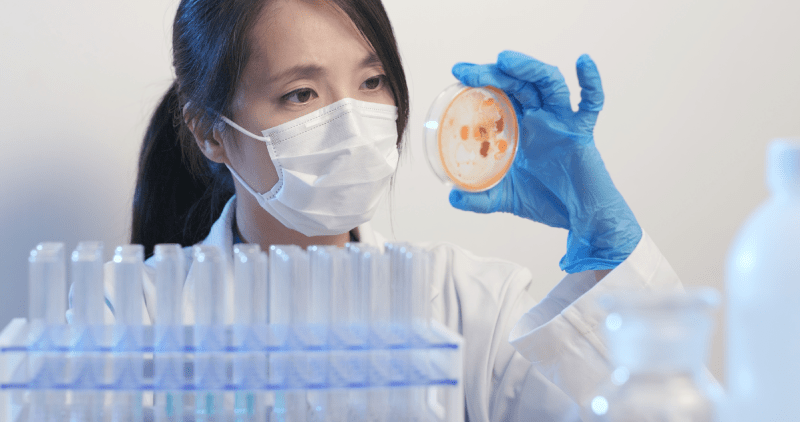
Is A Second Transplant Possible For Relapsed Lymphoma?
Yes, a second stem cell transplant (usually allogeneic) is technically possible when lymphoma relapses. The decision for a second transplant depends on the timing of the relapse, the aggressiveness of the relapsed lymphoma, and the patient’s general health status. Although a second transplant carries higher risks than the first, it is an important treatment option that can offer a chance for long-term survival in suitable patients and must be comprehensively evaluated by a hematology specialist.
What Is The Purpose Of Regular Blood Tests After Transplantation?
The primary purpose of regular blood tests after transplantation is to monitor the recovery status of blood cells (engraftment), check organ functions, detect potential infections early, and identify vitamin/mineral deficiencies. Furthermore, the risk of disease relapse is continuously monitored through special tests (PCR or flow cytometry) that check for the presence of lymphoma cells. These follow-ups are essential for preventing complications and timely adjusting the treatment plan.
Is Radiotherapy Used In The Transplant Process?
Yes, radiotherapy can be used as part of the conditioning regimen (high-dose chemotherapy) during the stem cell transplantation process. It is usually applied as total body irradiation (TBI) and aims to destroy all lymphoma cells in the body and completely suppress the immune system. However, due to the long-term side effects of TBI (infertility, secondary cancers), intensive chemotherapy regimens that do not require radiotherapy (TBI-free) are also frequently preferred.
What Is The Importance Of Family Support After Stem Cell Transplantation?
Family support after stem cell transplantation is indispensable for the patient’s physical and emotional recovery. Patients require constant help to live in a hygienic environment, adhere to nutritional rules, and perform daily tasks until their immune systems recover. The emotional support provided by the family increases the patient’s ability to cope with isolation, reduces stress, and forms a strong motivational source for long-term adherence to treatment.
How Does The Quality Of Life Change After Transplantation?
Stem cell transplantation, if successful, significantly and permanently improves patients’ quality of life. When the disease goes into remission, chronic fatigue decreases, energy levels increase, and patients can return to an active life. In addition to physical recovery, the psychological relief from conquering cancer and increased self-confidence also raise the quality of social life. Although the first year may be challenging, a noticeable increase in the quality of life is observed in the long term.
What Is The Role Of Detailed Diet And Nutrition Counseling Before Transplantation?
Detailed diet and nutrition counseling before transplantation are fundamental for the patient to prepare for the challenges they will face during and after transplantation. Loss of appetite, nausea, and mouth sores are common after high-dose chemotherapy. The dietitian creates a personalized plan to help the patient preserve muscle mass, support wound healing, and learn the sterile diet rules to reduce the risk of infection during this period. Good nutrition is a factor that directly influences the success of the transplant.
Stem cell transplantation for lymphoma treatment is a complex but life-saving process. Turkey’s advanced hematology and oncology centers offer the opportunity to receive international standard and reliable treatment.
To evaluate the most suitable method and specialists for your treatment, receive a personalized treatment plan, and professional health tourism support, you can contact Cure Holiday and confidently start this important health journey. The decision to receive lymphoma treatment in Turkey means accessing both high quality and cost-effectiveness.
